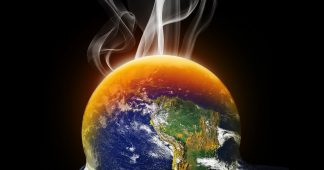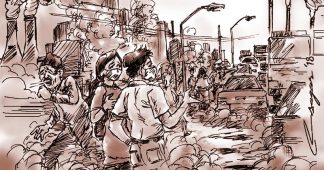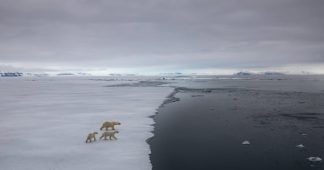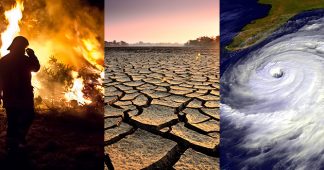Planetary boundaries is a concept involving Earth system processes which contain environmental boundaries, proposed in 2009 by a group of Earth system and environmental scientists led by Johan Rockström from the Stockholm Resilience Centre and Will Steffen from the Australian National University. The group wanted to define a “safe operating space for humanity” for the international community, including governments at all levels, international organizations, civil society, the scientific community and the private sector, as a precondition for sustainable development. The framework is based on scientific evidence that human actions since the Industrial Revolution have become the main driver of global environmental change.
According to the paradigm, “transgressing one or more planetary boundaries may be deleterious or even catastrophic due to the risk of crossing thresholds that will trigger non-linear, abrupt environmental change within continental- to planetary-scale systems.”[1] The Earth system process boundaries mark the safe zone for the planet to the extent that they are not crossed. As of 2009, two boundaries have already been crossed, while others are in imminent danger of being crossed.
History of the framework
In 2009, a group of Earth System and environmental scientists led by Johan Rockström from the Stockholm Resilience Centre and Will Steffen from the Australian National University collaborated with 26 leading academics, including Nobel laureate Paul Crutzen, Goddard Institute for Space Studies climate scientist James Hansen and the German Chancellor‘s chief climate adviser Hans Joachim Schellnhuber and identified nine “planetary life support systems” essential for human survival, attempting to quantify how far seven of these systems had been pushed already. They estimated how much further humans can go before planetary habitability is threatened.[3] Estimates indicated that three of these boundaries—climate change, biodiversity loss, and the biogeochemical flow boundary—appear to have been crossed. The boundaries were “rough, first estimates only, surrounded by large uncertainties and knowledge gaps” which interact in complex ways that are not yet well understood. Boundaries were defined to help define a “safe space for human development”, which was an improvement on approaches aiming at minimizing human impacts on the planet. The 2009 report was presented to the General Assembly of the Club of Rome in Amsterdam. An edited summary of the report was published as the featured article in a special 2009 edition of Nature. alongside invited critical commentary from leading academics like Nobel laureate Mario J. Molina and biologist Cristián Samper.
In 2015, a second paper was published in Science to update the Planetary Boundaries concept including regional boundaries and findings were presented at the World Economic Forum in Davos, January 2015.
A 2018 study, co-authored by Rockström, calls into question the international agreement to limit warming to 2 degrees above pre-industrial temperatures set forth in the Paris Agreement. The scientists raise the possibility that even if greenhouse gas emissions are substantially reduced to limit warming to 2 degrees, that might be the “threshold” at which self-reinforcing climate feedbacks add additional warming until the climate system stabilizes in a hothouse climate state. This would make parts of the world uninhabitable, raise sea levels by up to 60 metres (200 ft), and raise temperatures by 4–5 °C (7.2–9.0 °F) to levels that are higher than any interglacial period in the past 1.2 million years. Rockström notes that whether this would occur “is one of the most existential questions in science.” Study author Katherine Richardson stresses, “We note that the Earth has never in its history had a quasi-stable state that is around 2 °C warmer than the preindustrial and suggest that there is substantial risk that the system, itself, will ‘want’ to continue warming because of all of these other processes – even if we stop emissions. This implies not only reducing emissions but much more.”
Read more at https://en.wikipedia.org/wiki/Planetary_boundaries











